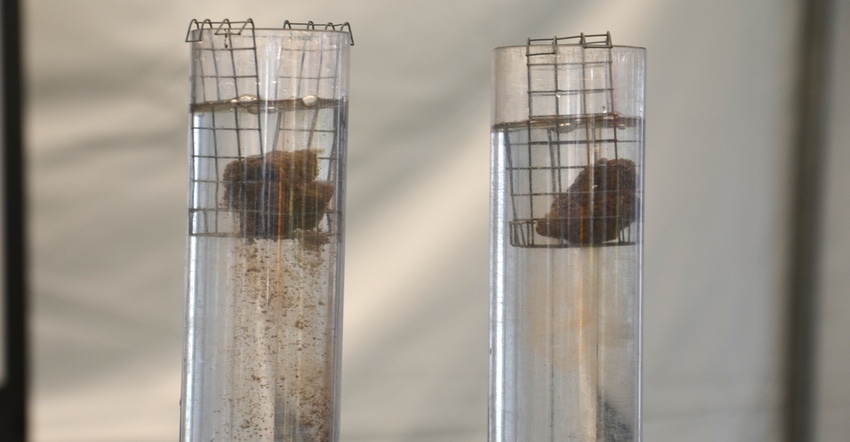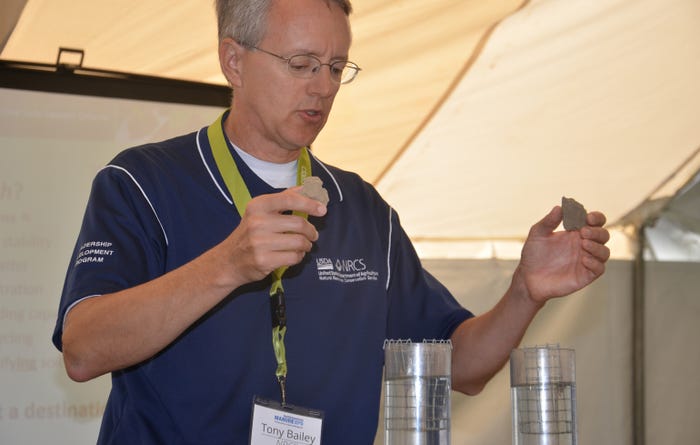
Not all soils are created equal. If you buy into that premise, Tony Bailey says you’re ready to delve deeper into the soil health concept and what it can do to improve your corn yields.
“Soils have a living biological function along with physical properties,” says Bailey, natural resources specialist with the Natural Resources Conservation Service in Indiana. “Soils function better if you have sufficient biological activity to assist with the physical characteristics of the soil.”
Bailey uses a simple demonstration to prove his point. He sets up two large, oversized test tubes of water on a table. He places a wire basket inside each one, hung so the basket is just submerged under the surface of the water.
He drops a clump of dry soil from a conventionally tilled field into one tube (on the left in the picture below). At the same time, he drops a dry clump of soil from a no-till field into the basket submerged in the second tube (on the right).

DARE TO COMPARE: Tony Bailey prepares to show how a dry clump of no-till soil (right) reacts to water vs. a clump of dry conventional soil.

Within seconds, soil particles begin falling away from the conventionally tilled soil. Very little happens in the tube with the no-till soil. After a few minutes, most of the clump from the conventional system is dissolved.
The particles that made up the clump color the water brown, much like the appearance of a muddy river or creek after a rainstorm. It’s the same principle: Soil particles not protected by residue leave the surface in conventionally tilled fields and wind up as sediment in waterways. In this case, the particles cloud the water, with some settling out on the bottom of the tube.
Meanwhile, the clump of no-till soil remains intact inside the basket, with very few particles in the water in the tube.
No magic here
It’s not magic — it’s simple biology in action, Bailey says. Substances that act like glue, secreted by living organisms that are more active in a no-till field, help hold soil particles together. That allows soil structure to remain intact. Instead of sloughing off when exposed to water, particles remain as part of the soil clump in the basket.
This helps explain why less water and dramatically fewer soil particles leave a no-till field after a major rain event, Bailey says. That’s why streams near no-till fields tend to stay cleaner instead of turning a muddy brown color after heavy rains.

DRAMATIC DIFFERENCE: Tony Bailey explains that the no-till soil clump on the right stayed intact in the wire basket inside the giant test tube, while the conventional soil clump on the left dissolved into the water.

“Diversified soil biology in a no-till field with healthy soil has a synergistic effect within the field,” Bailey says. The result is better infiltration in a no-till field over time. Water moves into the soil instead of running off. “You will see more runoff from a tilled field than from a no-till field.”
Read more about:
No tillAbout the Author(s)
You May Also Like




